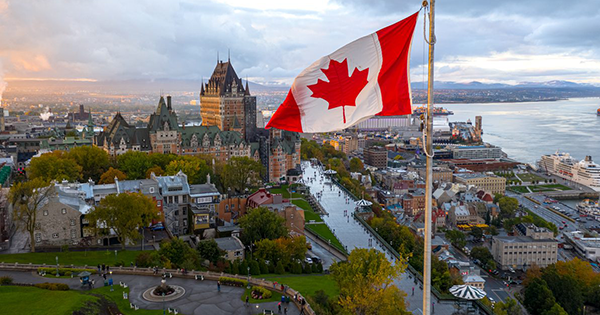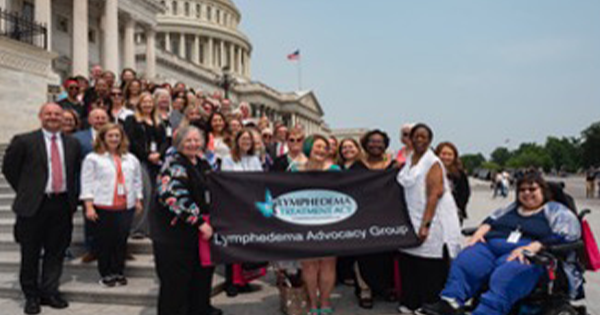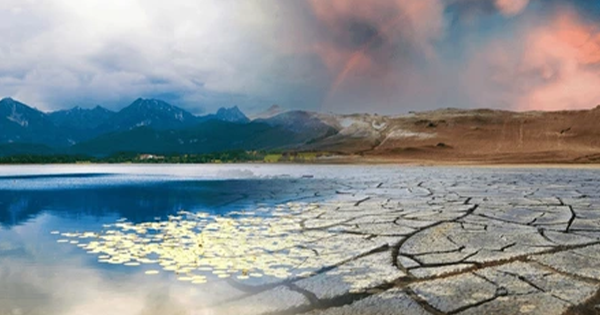Lymphedema Warriors Association Uganda (LWAU) is a patient-focused non-profit organisation co-founded by patients in 2022, dedicated to supporting individuals affected by lymphoedema in Uganda. Our mission is to empower those affected by this chronic condition through education, support and advocacy. We strive to create a community where individuals with lymphoedema can connect, share their experiences, and find resources to manage their condition (www.lymphedemauganda.org). In Uganda, lymphoedema is often caused by filarial infection or podoconiosis, and remains a significant public health issue. It leads to chronic swelling, disability and social stigma, particularly among individuals in rural areas. Limited healthcare access, lack of awareness, and insufficient expertise in lymphatic disease management exacerbate the problem.
To mitigate these challenges, LWAU, in collaboration with local and international partners, conducted two medical and surgical camps focused on comprehensive patient care, education and advocacy. Specific objectives of the camps included:
- Providing free surgical interventions and medical rehabilitation to lymphoedema patients
- Raising awareness about the condition among patients, healthcare professionals, and the general public
- Conducting screening and data collection on disease prevalence for future research
- Fostering collaborations between national and international medical experts to improve long-term care.
Background
Globally, there are 17 countries with evidence of podoconiosis presence and 12 of them are African countries. Uganda is among the 12 African countries and classifies lymphoedema and podoconiosis as neglected tropical diseases. According to a United Nations report of noncommunicable diseases (NCDs; United Nations, 2019) on supporting Uganda to halt the rise, it was stated that NCDs have caused an increase in the country’s disability-adjusted years that stood at 22%. This disease impact has increased the dependence burden on the country’s economy, since the affected persons are rendered unproductive.
The World Health Organization launched the Global Programme to Eliminate Lymphatic Filariasis (GPELF) in 2000 to eradicate lymphatic filariasis (LF) as a public health issue by 2030. This supports Uganda’s national programme to eliminate LF, which works towards managing and preventing disabilities from LF among high-risk individuals who are also found in malaria-endemic communities.
The absence of a structured care system means affected individuals often struggle to access treatment, leading to complications such as infections, reduced mobility and economic hardship. Research has indicated that environmental and socio-economic factors, such as exposure to volcanic soils in high-precipitation areas, contribute to the prevalence of podoconiosis. Addressing these conditions requires a multifaceted approach, integrating medical, surgical and community-driven interventions.
Background and purpose of
the camp
The camps were conducted in Bugema (September 3-6, 2024) and Kamwenge (September 16-19, 2024). Both camps featured a multidisciplinary team comprising:
- one surgeon
- six medical officers (two from Bugema, four from Kamwenge General Hospital)
- one orthopaedic clinical officer
- four nurses
- one counsellor
- three physiotherapists
- five local and international volunteers.
Partners included the Deggendorf Institute (Germany), Lymphverein (Germany), Bugema University/Hospital, Rural Health Promotion and Poverty Alleviation Initiative (RUHEPAI) and local district health authorities.
Outcomes
A total of 376 patients were treated across the two camps (163 in Bugema and 213 in Kamwenge). Treatment strategies included:
- Surgical interventions for severe cases, including lymphatic microsurgery
- Rehabilitation services, such as compression therapy, manual lymphatic drainage, exercise and skincare
- Educational sessions on self-care, hygiene and lymphoedema management
- Provision of assistive items, such as bandages, compression stockings and skincare products.
Gender distribution of patients
The camps had a notable gender disparity, as shown in Tables 1 and 2, with a higher proportion of female patients compared to males. As shown in Table 1, out of the total of 376 patients, 277 (73.7%) were females compared to 99 (26.3%) males.
There was no significant difference in gender distribution of patients by the location of the medical camp [Table 2]. Out of the total of 376 patients, Kamwenge District medical camp had a total of 213 (56.7%) patients. Of this total, 157 (73.7%) patients were females compared to 56 (26.3%) males.
Bugema medical camp had a total of 163 (43.4%) patients. Out of this total, 120 (73.6%) patients were females compared to 43 (26.4%) males.
As shown in Tables 1 and 2, this trend suggests that more females are either affected by lymphoedema or are more inclined to seek medical care for the disease, which may warrant further exploration into gender-specific factors contributing to this difference.
Age distribution of patients
The participants (patients) were grouped into six age categories to better understand the demographic distribution. The summary of each group’s representation is presented in Tables 3 and 4.
The results shown in Table 3 generally indicated that there were no patients in the age group of 0 to10 years, 29 patients in the age group of 11 to 20 years (7.7%), 86 patients in the age group of 21 to 35 years (22.9%), 106 patients in the age group of 36 to 50 years (28.2%), 105 patients in the age group of 51 to 65 years (27.7%), and 50 patients in the age group of over 65 years (13.3%).
As shown in Table 3, youth patients (11 to 35 years) comprised 30.6% of the total patients, which concurred with most medical reports that indicated that lymphoedema praecox could occur at any age between 2 and 35 years.
Matovu, a patient from Wakiso District in Central Uganda, had this to say about his experience of lymphoedema praecox at a relatively young age:
“I’m Matovu, and I want to share my journey with lymphoedema. It all started way back in 2000 when I was just 13 years old. I began feeling a lot of pain in my groin area for several weeks. Then, one day, I woke up to find my foot swollen so much that I couldn’t even walk because of the pain. I tried using herbal medication, a mixture of clay and leaves, hoping it would help. Some people said I was bewitched, so I went to witch doctors who made cuts on my skin to drain the fluid out. But none of it worked and my condition only got worse.
I went to different hospitals, but no doctor could figure out what was wrong. As I grew older, people in my community started pointing fingers, saying I must have done something wrong to deserve this, like sleeping with someone’s wife or being cursed. It was tough living among people who didn’t understand my illness, and the stigma was overwhelming.
I was socially excluded from community members; no one wanted to associate with someone with my condition. Despite these challenges, I’m grateful for the support and treatment I began receiving from the Lymphedema Warriors Association. My legs feel much better now they’re not as tight or heavy, and the swelling has reduced significantly.
I work as a boda rider in the market, and I can say that I’m more flexible and comfortable than before. The support and lessons I’ve received from the Lymphedema Warriors Association have been invaluable. They’ve taught me how to properly bandage my legs, the right exercises to do, and educated me about lymphoedema.
Now I’m ready share my experience to help others going through similar struggles. With the help of the association, I’m hopeful for the future, and I want to spread awareness and support those who need it most.”
As shown in Table 3, 69.3% of the patients were aged 35 years and above, which conformed to medical reports that indicated lymphoedema tarda occurs after 35 years of age. Acquiring lymphoedema tarda at 35 years of age and beyond can cause patients a lot of emotional distress, social isolation, difficulty in clothing and performing daily activities, as well as fatigue.
As Nicole shares in her story:
“I am Nicole, a Ugandan female aged 36; I have had lymphoedema since 2016. At first, I hadn’t realised it right away. I had a mild accident while I was working. I fell on some hospital steps where I had gone to carry out some research work. When I fell, I took it lightly. I hurt my right leg. I got a swelling, which unfortunately, I didn’t treat as a threat.
In 2018, after seeing some doctors at Mulago, that’s when I was diagnosed with lymphoedema. I was scared and frightened. After that, I soon started to experience severe cellulitis.
Since then, my life hasn’t been easy. I faced a lot of stigmatisation from my work colleagues and even family. Both internal and external. My social life changed, as I couldn’t hang out with my friends anymore. I had to resign from my workplace because my bosses started to question my ability to work, as I always asked for many days of sick leave. Most days were so bad, the cellulitis affected me. I got fevers, and my legs got heavy. Eventually my other (left) leg also started to develop the same problems as the right leg.
The challenges I have faced with my condition are many, like loss of work, severe stigmatisation, inferiority complexes (feeling you look this bad, you are not worthy of anything), lack of a social life, severe depression, limited work offers even when I felt I was capable of doing work, weight gain caused by the depression of staying home.
The compression socks helped me. Although they also hurt me as they were too tight. I also had a surgery from Bugema University by Dr. Prof. Med. Thiha Aung from Germany under the Lymphedema Warriors Association, which helped me tremendously. Since then, I was introduced to compression therapy and management, which involves using compression garments and bandages. They have really helped a lot. So, I also introduced a healthy diet and mild exercises as a way to reduce the weight.”
There was a slight significant difference in the age distribution of patients by the location of the medical camp [Table 4]. There were no patients in the age group of 0-10 years in either medical camp. Kamwenge medical camp had more patients in the age group of 11-20 years: 18 compared to 11 patients in Bugema. Kamwenge had more patients in the age group of 21-35 years: 47 compared to 39 in Bugema hospital. Kamwenge had more patients in the age group of 36-50 years: 60 compared to 46 in Bugema. Kamwenge had more patients in the age group of 51-65 years: 59 compared to 46 in Bugema. Lastly, Kamwenge had more patients in the age group of over 65 years: 29 compared to 21 in Bugema.
As shown in Table 4, Kamwenge had greater numbers of patients compared to Bugema medical camp, and this could be attributed to the fact that in Kamwenge District, which is a rural district in western Uganda, lymphoedema treatment is faced with several challenges including limited access to specialised care, healthcare infrastructure gaps and difficulties in patient tracking and training.
This was echoed by one patient called Emma from Fort Portal, western Uganda, who had this to say about lymphoedema treatment:
“I’m Emmanuel, and I want to share my journey with lymphoedema. It all started back in 2013 when I woke up one morning and found my right foot swollen. I didn’t think much of it until 2 months later when my left foot started swelling too. That’s when things got really tough.
I tried my first treatment with herbal medication mixed with clay, thanks to my late grandmother’s efforts. But sadly, it didn’t work. Instead, my skin started acting up with warts, dryness, and scarring. I rushed to a small clinic where I tried capsules and injections, but none of them solved my problem. During the cold or rainy seasons, my lymph nodes in the groin would ache terribly, and my legs would develop big veins, making it almost impossible to walk or stand due to the intense pain. The additional injections and capsules did little to help.
The challenges were endless. I suffered constant fever and chills, and the smell from my feet became unbearable. People would distance themselves from me because of the smell, and I found myself isolating more and more. I couldn’t even go to school or pursue any interests because of the pain and discomfort. I took up hard labour jobs like grading tea plantations, but even that was a struggle, often having to ask for breaks due to the pain. I had completely abandoned the idea of wearing shoes. I recall the challenging journey from my home in Fort Portal to Kampala, barefoot, heading to the offices of the Lymphedema Warriors Association. But there was a turning point when I finally received a customised flat shoe. It made a world of difference.
Now, thanks to the support of the Lymphedema Warriors Association, I’ve learned so much about self-care. From proper bandaging techniques to the right exercises and education, I’ve been able to manage my condition much better. No more smelly feet or painful cracks on my skin. Being part of the association has also given me a platform to spread awareness about lymphoedema and help others going through similar struggles. With their support, I’m hopeful for the future.”
This implies the medical camp provided a platform for more patients to come out and seek specialised lymphoedema treatment and care. This could be attributed to limited transportation facilities, especially with patients with advanced stage lymphoedema, which further complicates access to healthcare.
Challenges of the undertaking
- Limited medical resources: Shortages of surgical instruments, medications and bandaging materials
- Logistical constraints: Difficulties in transporting equipment and coordinating between multiple locations
- Limited local expertise: Need for further training of Ugandan healthcare providers
- Patient follow-up gaps: Absence of a structured system to monitor post-treatment progress.
Lessons learned
- Enhanced planning is essential for smooth logistics and supply chain management
- Patient tracking systems should be implemented to improve follow-up care
- Stronger local partnerships can help sustain care beyond the camp duration
- Cultural sensitivity training for medical staff improves patient engagement and treatment adherence.
Recommendations for future camps
- Increase funding to procure specialised medical equipment and expand outreach
- Extend the camp duration to accommodate more patients and conduct better follow-up
- Develop a digital tracking system for patient monitoring and long-term management
- Train local healthcare workers to sustain services beyond international interventions
- Strengthen collaborations with government agencies, NGOs and medical institutions.
Surgery costs and financial support
Costs were primarily shared, as LWAU successfully fundraised for the medical camps through GoFundMe and contributions from partner organisations. Lymphverein provided essential medical supplies, including bandages, while RUHEPAI covered accommodation and transport for the medical team. Bugema University contributed by offering volunteers, providing its university hospital as a surgical and camp site, and supplying necessary materials for surgeries. These collaborative efforts ensured that patients received free medical care
Conclusions and next steps
The lymphoedema medical and surgical camps were successful in providing much-needed medical care and raising awareness. However, sustainable solutions require long-term investment in healthcare infrastructure, continued training of local professionals and enhanced patient follow-up systems. Moving forward, LWAU aims to:
- Establish a lymphoedema rehabilitation centre to provide continuous care
- Develop educational campaigns targeting rural communities
- Advocate for government policies to integrate lymphoedema management into national health programmes
- Organise future camps with an exchange training programme for Ugandan medical staff.
This report serves as a model for future camps and advocacy efforts to combat lymphoedema in Uganda and beyond.





